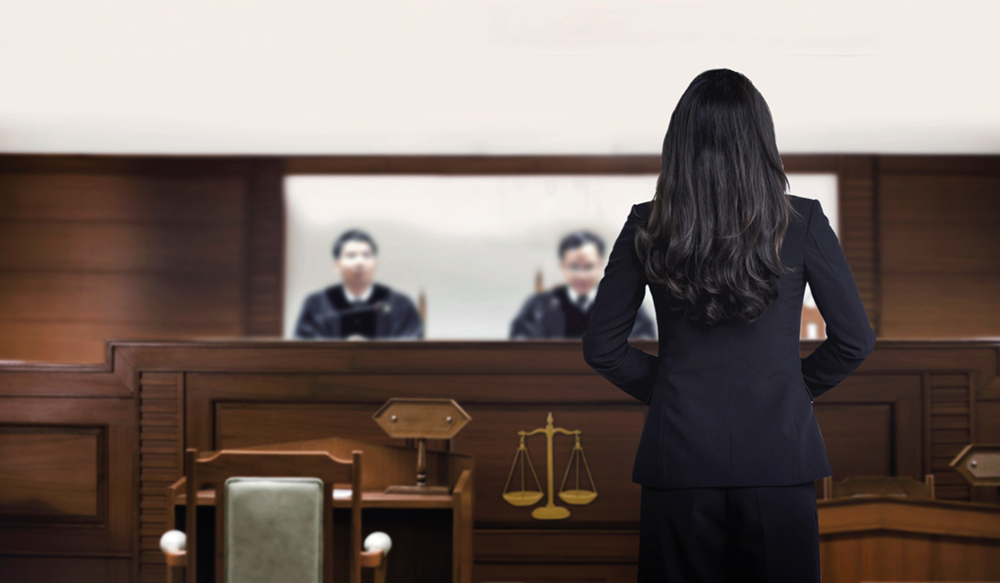Necessary Skills for Crafting Convincing Trial Presentations: A Comprehensive Overview
Navigating the Intricacies of Trial Presentations: Tips for Seamless Distribution and Compelling Debates
In the world of lawful process, the art of test discussion stands as a crucial factor of success. The complexities fundamental in trial presentations need a fragile balance of skill, method, and ability.

Understanding Trial Goals
To successfully browse a test, it is crucial to have a clear understanding of the objectives that need to be accomplished. Before tipping right into the court room, lawful groups have to specify their objectives and wanted end results. These purposes work as guiding principles throughout the trial, shaping strategies and influencing decision-making processes.
Understanding test purposes entails a comprehensive evaluation of the instance, lawful criteria, and the customer's benefits. Trial Presentations. It needs a precise evaluation of the truths, identifying key issues, and anticipating possible obstacles. By establishing certain and measurable objectives, lawyers can tailor their arguments and discussions to align with the desired outcomes
Additionally, a clear understanding of trial purposes makes it possible for lawful teams to focus on proof, witnesses, and legal arguments properly. It enables the advancement of a coherent story that resonates with the discretionary, enhancing the overall instance discussion.

Organizing Evidence Properly
Having a clear understanding of trial goals lays the foundation for arranging evidence properly in lawful procedures - Trial Presentations. By aligning the presentation of proof with the preferred outcomes of the test, legal groups can reinforce their disagreements and enhance their persuasiveness. One vital facet of arranging evidence is classification. Grouping proof based on themes or importance to particular lawful aspects can help simplify the presentation and make intricate info more absorbable for the judge or court.
An additional trick aspect in organizing proof successfully is developing a sensible circulation. Presenting proof in a meaningful and consecutive way can aid build an engaging story that supports the legal debates being made. Additionally, utilizing aesthetic help such as graphs, timelines, or charts can better enhance the organization of proof and aid in clarifying complicated partnerships or sequences of events.
Moreover, making certain that all evidence provided is pertinent and permissible to the case is vital. Inadmissible or irrelevant evidence can interfere with the stamina of the disagreement and possibly damage the reputation of today party. A precise review and selection process should be undertaken to consist of just the most lawfully sound and impactful evidence in go right here the test discussion.
Crafting Influential Stories
Crafting compelling stories plays an essential role in offering persuasive debates during lawful proceedings. When creating a narrative for you can look here a test presentation, it is necessary to establish a clear story that highlights vital points and attaches them in a meaningful fashion. By weaving together proof, testimony, and legal debates into a natural and influential story, legal specialists can effectively promote for their customers and increase the probability of a favorable result in the court room.
Mastering Visual Help
Reliable use visual help is vital to enhancing the effect and clearness of test presentations. Visual aids, when used purposefully, have the power to streamline complex info, strengthen vital factors, and leave a lasting impression on the discretionary. To understand aesthetic help in test discussions, it is essential to make sure that they are clear, succinct, and pertinent to the debates being made.
When including aesthetic help, such as graphes, timelines, graphs, or photographs, into a test presentation, it is important to keep them visually appealing yet professional. The visuals should complement the verbal debates, giving a graph of the details being gone over without frustrating the audience with unnecessary details.
Moreover, practicing with the aesthetic help in advance is essential to ensure a smooth distribution throughout the trial. Familiarizing oneself with the web content, changes, and timings of each aesthetic aid can help keep the circulation of the presentation and avoid technical problems that might occur.
Delivering Impactful Closing Arguments
An engaging closing disagreement this link serves as the culmination of a test presentation, encapsulating the core story and convincing the discretionary in the direction of a positive decision. To deliver an impactful closing debate, it is vital to succinctly wrap up key factors, highlight the staminas of your case, and resolve any type of weaknesses in a strategic way. Begin by describing the major disagreements that support your customer's position, highlighting why the evidence provided throughout the trial sustains your narrative. It is important to create a feeling of cohesion and clearness, guiding the court and jury towards the desired final thought.
Moreover, incorporating emotional appeal can even more enhance your closing disagreement. Eventually, a well-crafted closing debate should leave an enduring perception, compelling the judge and court to rule in your client's support.
Final Thought
In final thought, grasping test discussions includes comprehending goals, organizing evidence, crafting stories, making use of aesthetic help, and providing impactful closing disagreements. By executing these techniques efficiently, lawyers can present their instance flawlessly and make engaging disagreements in the court room. It is critical to browse the intricacies of trial discussions with accuracy and skill to achieve success in lawful procedures.
By lining up the presentation of proof with the preferred outcomes of the trial, lawful teams can strengthen their debates and improve their persuasiveness (Trial Presentations). To master aesthetic aids in trial discussions, it is important to guarantee that they are clear, succinct, and appropriate to the arguments being made
An engaging closing disagreement serves as the end result of a trial discussion, encapsulating the core story and convincing the judge and court towards a desirable decision. Begin by outlining the primary arguments that sustain your client's setting, emphasizing why the proof presented throughout the test sustains your narrative.In final thought, mastering test discussions includes recognizing goals, arranging evidence, crafting stories, utilizing visual help, and delivering impactful closing debates.